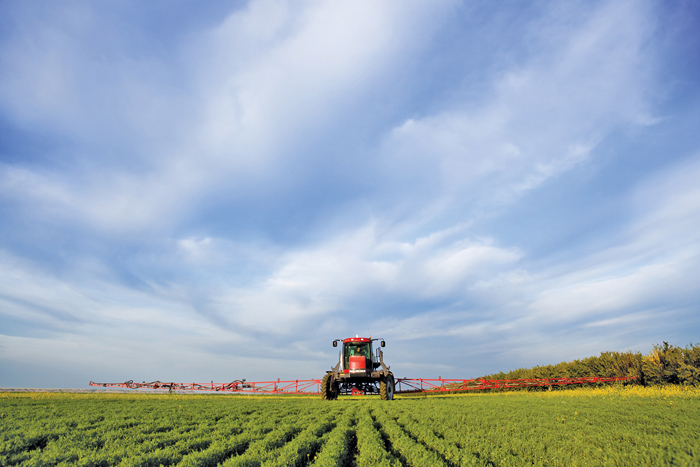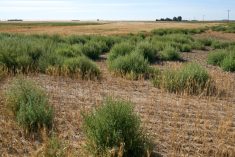Nozzle guy’ Tom Wolf is often asked about ways to improve spray coverage. But as he says — borrowing a turn of phrase from Paul Simon — “there must be 50 ways to improve your coverage.”
And one of them is through pulse width modulation — a relatively new technology that’s “on the move.”
“I believe it’s going to continue to gain market share,” said Wolf of AgriMetrix Research and Training. “It’s a way of controlling flow rate through a hydraulic system. It basically intermittently shuts that flow to the nozzle off and allows you to vary the proportion of time that flow is off.
Read Also

New crop insurer policy enables easier startup for faba beans
Agriculture Financial Services Corporation updated its normals for faba beans, which may open the door for more Canadian producers to feel comfortable growing the pulse crop in the future.
“But it happens very quickly. It’s almost an indistinguishable pulse.”
The system is designed to override pressure-based flow control.
“That basically means if you want to go faster, you have to have more flow to get higher pressure and finer sprays,” Wolf said at the All-Crops Breakfast earlier this month.
“This eliminates that need by giving you a constant pressure and a constant droplet size. Then you can vary your flow over a much wider range than you could ever do with plain pressure.”
Producers can set the pulse width at varying “duty cycles” ranging between 10 and 100 per cent, depending on travel speed.
“This results in your ability to control the flow,” said Wolf. “If you want to cut your flow in half, you would go to about a 50 per cent duty cycle. At a 75 per cent duty cycle — which is what most sprayers will be operating at — it will be on 75 per cent of the time. When you’re at the full load, it’s on all the time. There’s no pulsing whatsoever.”
All of the systems available on the marketplace, three currently, most of which are after-market retrofits, use an alternating pulse with every second nozzle at 180-degree offset.
“When one is on, the other is off. You never have everything off or everything on.”
But despite the benefits, not everybody needs it, he added.
“It depends on your travel speed and your travel speed fluctuations. If you’re driving 16 or 18 miles per hour and you also would like to drive 10 miles an hour sometimes, you can’t do it with a hydraulic pressure system. The only way you can do that is with this.
“But you don’t need pulse width modulation when it’s square, flat, and straight.”
More information about pulse width modulation can be found at sprayers101.com.















